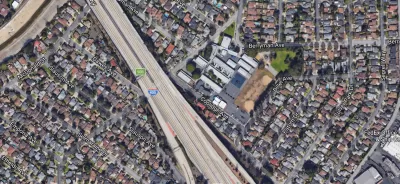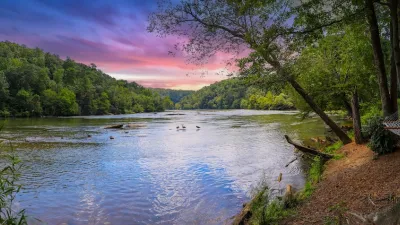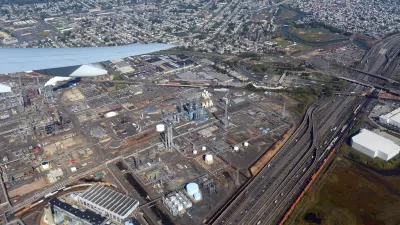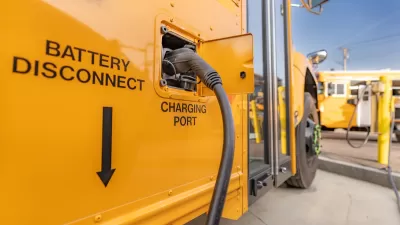Schools tend to get built on cheap land. Cheap land is often found near busy roadways—sources of pollutants that are harmful to the health of children.

"Nearly 8,000 U.S. public schools lie within 500 feet of highways, truck routes and other roads with significant traffic," reports Jamie Smith Hopkins, who is sharing the findings of a joint investigation by the Center for Public Integrity and Reveal from The Center for Investigative Reporting.
Put another way, "[t]hat’s about one in every 11 public schools, serving roughly 4.4 million students and spread across every state in the nation."
According to Smith Hopkins, schools across the country continue to be located neat polluting roadways despite warnings against the practice. In fact, "[n]early one in five schools that opened in the 2014-2015 school year, the most recent the federal government has fully tracked, was built by a busy road."
The article also notes that the state of California and the U.S. Environmental Protection Agency have provided leadership on the ensuring healthier air for school environments. For instance, the U.S. EPA released the "Best Practices for Reducing Near Road Pollution Exposure at Schools" in 2015.
FULL STORY: The invisible hazard afflicting thousands of schools

Planetizen Federal Action Tracker
A weekly monitor of how Trump’s orders and actions are impacting planners and planning in America.

Maui's Vacation Rental Debate Turns Ugly
Verbal attacks, misinformation campaigns and fistfights plague a high-stakes debate to convert thousands of vacation rentals into long-term housing.

Restaurant Patios Were a Pandemic Win — Why Were They so Hard to Keep?
Social distancing requirements and changes in travel patterns prompted cities to pilot new uses for street and sidewalk space. Then it got complicated.

In California Battle of Housing vs. Environment, Housing Just Won
A new state law significantly limits the power of CEQA, an environmental review law that served as a powerful tool for blocking new development.

Boulder Eliminates Parking Minimums Citywide
Officials estimate the cost of building a single underground parking space at up to $100,000.

Orange County, Florida Adopts Largest US “Sprawl Repair” Code
The ‘Orange Code’ seeks to rectify decades of sprawl-inducing, car-oriented development.
Urban Design for Planners 1: Software Tools
This six-course series explores essential urban design concepts using open source software and equips planners with the tools they need to participate fully in the urban design process.
Planning for Universal Design
Learn the tools for implementing Universal Design in planning regulations.
Heyer Gruel & Associates PA
JM Goldson LLC
Custer County Colorado
City of Camden Redevelopment Agency
City of Astoria
Transportation Research & Education Center (TREC) at Portland State University
Jefferson Parish Government
Camden Redevelopment Agency
City of Claremont





























